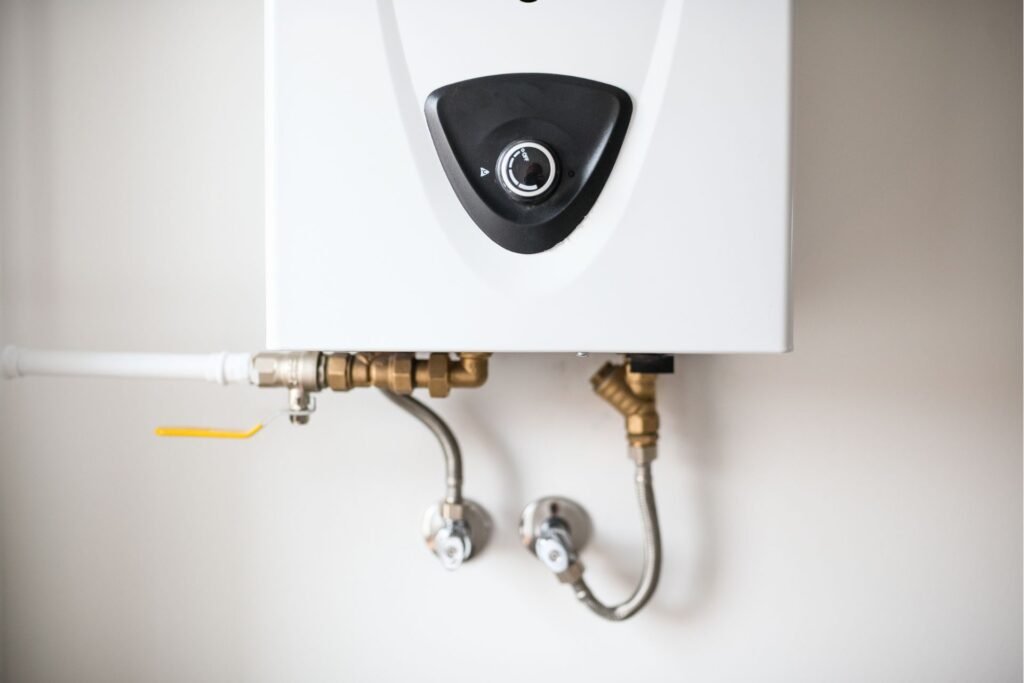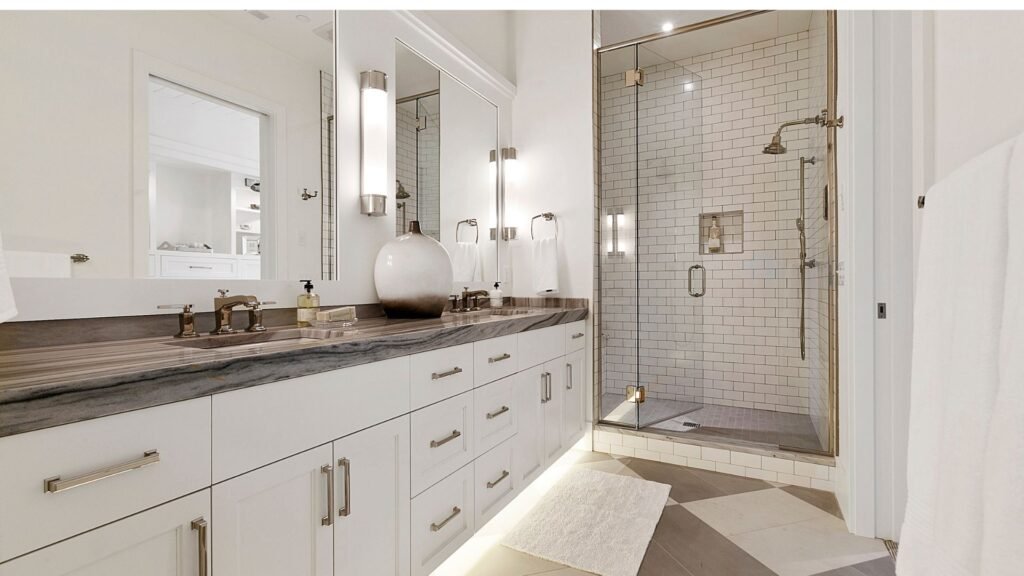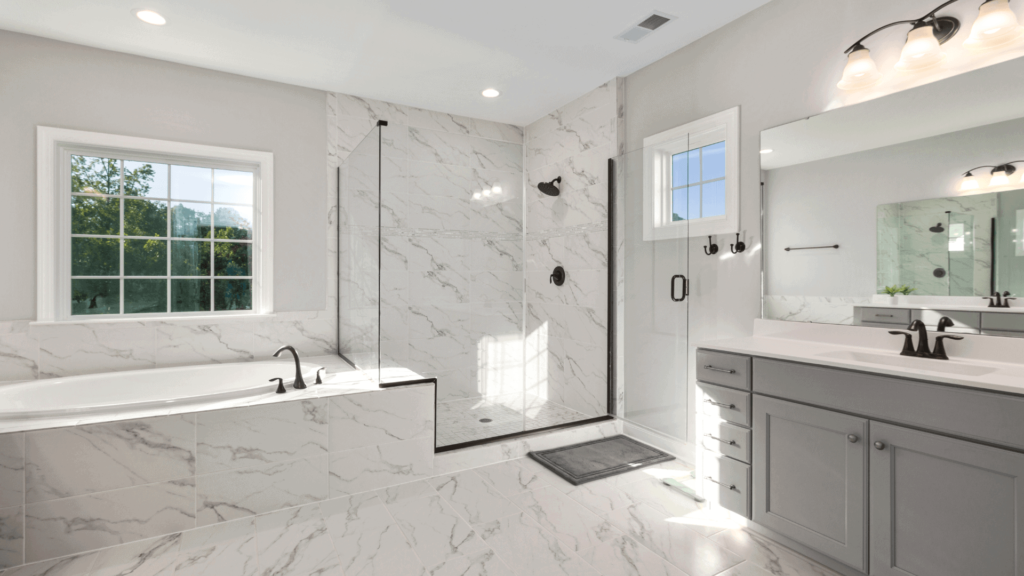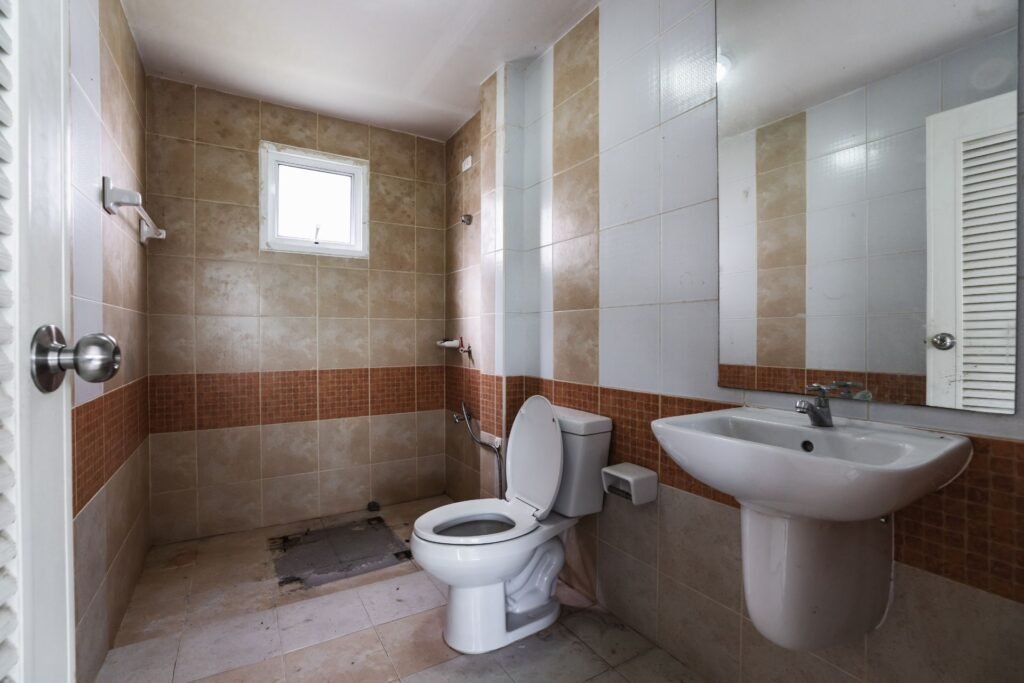Welcome to the ultimate guide on choosing the best plants for your bathroom in New Zealand! If you’re looking to transform your bathroom into a calming, spa-like retreat, plants are the perfect way to add a touch of nature and enhance the atmosphere. Not only do plants bring beauty and life to your space, but they also improve air quality and thrive in the humid, low-light conditions that bathrooms often provide. Whether you’re a seasoned plant enthusiast or a beginner looking to spruce up your bathroom decor, this guide will help you discover the ideal plants that can flourish in your bathroom and make your space a refreshing sanctuary.
The best plants for bathrooms in New Zealand are those that thrive in high humidity and low light. Popular options include the Peace Lily, which purifies the air, ferns like the Boston Fern that love moisture, and the low-maintenance Spider Plant. Other great choices are the hardy Snake Plant, the versatile Aloe Vera, and Orchids for a touch of elegance. These plants not only enhance bathroom aesthetics but also contribute to cleaner air and a calming atmosphere.
- Factors To Consider When Choosing Bathroom Plants
- Best Plants For Bathrooms In NZ
- Unique Plants For Bathrooms In NZ
- Plant Placement Ideas For Bathrooms
- Care And Maintenance Tips
- Benefits Of Having Plants In Bathrooms
- Common Challenges And How To Overcome Them
- Eco-Friendly Plant Care Products
- FAQs: About The Best Plants For Bathroom NZ
- Conclusion
Factors To Consider When Choosing Bathroom Plants
When choosing plants for your bathroom, it’s essential to consider a few key factors that will ensure your greenery thrives in this unique space. Bathrooms, while often small, present a unique environment that can either be beneficial or challenging for plant life. The following points will help guide your selection so that your bathroom becomes a lush, refreshing sanctuary with minimal effort.
Humidity Levels
One of the most significant considerations when selecting bathroom plants is the humidity level. Bathrooms are naturally humid environments, thanks to frequent showers and baths, which create a moisture-rich atmosphere. This humidity can be ideal for certain types of plants, particularly those native to tropical regions. Plants like ferns, orchids, and peace lilies thrive in these conditions because they are accustomed to absorbing moisture from the air. The higher the humidity, the more these plants can flourish without requiring additional watering. However, it’s crucial to avoid plants that prefer dry conditions, as they may suffer from overexposure to moisture and develop mold or rot. Before you make your selection, take note of how often your bathroom experiences steam and moisture buildup, as this will play a critical role in the types of plants you choose.
Lighting Conditions
Bathrooms often have varying lighting conditions, which is another important factor to consider. Some bathrooms have natural light streaming in through large windows, while others rely solely on artificial light sources. Understanding the lighting situation in your bathroom is essential when selecting the right plants. Low-light plants like pothos, snake plants, or ZZ plants are excellent choices for bathrooms that receive minimal natural light. These plants have adapted to thrive in low-light conditions and can tolerate the limited exposure to sunlight that is often present in windowless bathrooms. On the other hand, if your bathroom receives ample natural light, you can explore a wider variety of plants, such as succulents or aloe vera, which require more sunlight to thrive. It’s also possible to supplement with artificial grow lights if your bathroom lacks adequate natural lighting, allowing you to expand your plant choices without sacrificing their health.
Size and Space Constraints
Bathrooms are typically one of the smaller rooms in the home, so space constraints are an important consideration when choosing plants. You’ll want to select plants that fit the scale of your bathroom without making the space feel cramped. Small potted plants, like spider plants or air plants, can be placed on countertops or shelves to add greenery without taking up too much valuable real estate. Additionally, think about utilizing vertical space by opting for wall-mounted or hanging plants. Hanging plants such as ivy or trailing philodendrons not only saves on space but also adds visual interest and a natural touch to higher areas of your bathroom. Consider your bathroom layout and available surfaces, and look for creative ways to incorporate plants that suit both the space and your aesthetic preferences.
Maintenance
Finally, it’s essential to consider the maintenance requirements of your bathroom plants. While the idea of filling your bathroom with lush greenery is appealing, it’s crucial to choose plants that align with your lifestyle. If you have a busy schedule or are new to plant care, opt for low-maintenance plants that are forgiving and easy to care for. Succulents, for instance, are known for their resilience and ability to store water, requiring minimal attention. Similarly, plants like snake plants or peace lilies can tolerate a bit of neglect and still thrive in bathroom environments. By choosing low-maintenance plants, you reduce the risk of your greenery becoming stressed or dying off, even if you forget to water them from time to time. It’s also worth considering self-watering pots or placing your plants near a consistent source of humidity to further reduce the amount of care required.
In summary, when choosing plants for your bathroom, take into account the unique environment of this space, from humidity levels and lighting conditions to the available space and maintenance needs. By considering these factors, you’ll be able to select plants that not only enhance the beauty of your bathroom but also thrive with minimal effort on your part.

Best Plants For Bathrooms In NZ
Transforming your bathroom into a lush, green oasis doesn’t just elevate the aesthetics—it also brings practical benefits like improved air quality and a calming atmosphere. The bathroom, with its unique environment of high humidity and variable lighting, is a perfect space for certain plants that thrive in these conditions. Below, we explore some of the best plants for bathrooms in New Zealand, breaking down each plant type by its benefits, care tips, and why it’s an ideal choice for this setting.
Subheading: Ideal Indoor Plants for Bathrooms
Bathrooms in New Zealand, like elsewhere, often have specific challenges when it comes to indoor plants. Limited natural light, fluctuating temperatures, and moisture can be problematic for some species. However, there are many resilient plants that not only survive but thrive in these environments. Here’s a detailed guide to the best plants for bathrooms, with special emphasis on their care and compatibility with New Zealand conditions.
Peace Lily (Spathiphyllum)
- Benefits: Peace Lilies are renowned for their excellent air-purifying properties. They can remove common toxins such as ammonia and formaldehyde, making the bathroom air cleaner and fresher. This is particularly beneficial in enclosed spaces where ventilation might be limited.
- Care Tips: Peace Lilies are perfect for low-light environments, such as bathrooms with frosted windows or limited exposure to direct sunlight. They prefer consistent moisture, which aligns well with the naturally humid conditions of a bathroom. Regularly misting the leaves can keep the plant healthy and vibrant.
- Why It’s Well-Suited for Bathrooms: Their ability to flourish in low light and high humidity makes them a natural fit for bathrooms in NZ, especially in homes where natural lighting may be sparse during winter months.
Ferns (e.g., Boston Fern, Maidenhair Fern)
- Benefits: Ferns bring a touch of lush, tropical greenery to bathrooms. Boston and Maidenhair ferns, in particular, love moisture-rich environments, where they can soak up the humidity. Their feathery, delicate fronds create a soft, inviting aesthetic that complements bathroom decor.
- Care Tips: These ferns need indirect light, so placing them near a window where they won’t receive direct sunlight is ideal. Keeping the soil consistently moist but not soggy is key, and misting the fronds regularly helps maintain their lushness. Ferns also benefit from occasional fertilization during the growing season.
- Why It’s Well-Suited for Bathrooms: Their love for high humidity and indirect light makes ferns ideal companions for bathrooms. In New Zealand’s varying climates, they adapt well, especially during the wetter seasons.
Spider Plant (Chlorophytum comosum)
- Benefits: Spider plants are famous for their ability to purify the air by absorbing carbon monoxide and other harmful chemicals. They are also great at thriving in high humidity, making them perfect for the moisture-rich bathroom environment.
- Care Tips: Spider plants are incredibly easy to care for, requiring minimal attention. They prefer bright, indirect light but can also adapt to low-light conditions. Water them moderately, allowing the soil to dry out slightly between waterings. Regular misting will help maintain their appearance.
- Why It’s Well-Suited for Bathrooms: In New Zealand bathrooms, where humidity levels can be high, spider plants thrive. They add a touch of greenery while helping to improve air quality effortlessly.
Aloe Vera
- Benefits: Aloe Vera is not only a visually appealing plant but also comes with numerous practical benefits. Known for its healing properties, the gel inside Aloe leaves is often used for treating minor burns, skin irritations, and other ailments. It’s a dual-purpose plant, perfect for the bathroom.
- Care Tips: Aloe Vera thrives in bright, indirect light. Although it enjoys humid environments, be careful not to overwater it, as Aloe stores water in its fleshy leaves. Water sparingly, and ensure the pot has good drainage.
- Why It’s Well-Suited for Bathrooms: In New Zealand, Aloe Vera is a perfect fit for bathrooms where natural light is present, and the humidity is moderate. Its medicinal properties make it a natural choice for any wellness-conscious homeowner.
ZZ Plant (Zamioculcas zamiifolia)
- Benefits: The ZZ plant is known for being nearly indestructible. It can withstand neglect, low light, and even drought-like conditions. It’s also a great air purifier, removing toxins such as benzene and toluene from the air.
- Care Tips: ZZ plants prefer indirect light but can tolerate lower light levels commonly found in bathrooms. They require very little water, so allow the soil to dry out completely between waterings. Their waxy, glossy leaves should be wiped down occasionally to keep them clean and healthy.
- Why It’s Well-Suited for Bathrooms: Ideal for New Zealand homes with limited natural light in bathrooms, the ZZ plant is both low-maintenance and incredibly durable, making it a great choice for busy homeowners.
Snake Plant (Sansevieria)
- Benefits: The Snake Plant is one of the most resilient indoor plants you can have. It’s nearly indestructible and can survive in low light and neglect, making it a great fit for bathrooms. It also improves indoor air quality by removing toxins like formaldehyde and benzene.
- Care Tips: Snake Plants are highly adaptable and thrive on neglect. They prefer indirect light but can handle low-light conditions. Water sparingly, as overwatering can lead to root rot. Let the soil dry out between watering sessions.
- Why It’s Well-Suited for Bathrooms: This plant thrives in the low-light and humid conditions often found in New Zealand bathrooms. Its sleek, upright leaves add a modern touch to any bathroom space.
Orchids
- Benefits: Orchids bring an elegant and sophisticated touch to any bathroom. They thrive in humidity, making them ideal for this environment. Orchids come in various colors and varieties, adding a splash of color and a delicate fragrance to your bathroom.
- Care Tips: Orchids require more attention than some of the other plants on this list. They need bright, indirect light and should be watered regularly, but be careful not to overwater. Humidity is their friend, so bathrooms provide the perfect setting for these beauties to thrive.
- Why It’s Well-Suited for Bathrooms: Orchids love the humidity found in New Zealand bathrooms. Though they may require a bit more care, the payoff in terms of beauty and elegance is well worth the effort.
By selecting the right plants for your bathroom in New Zealand, you not only enhance the aesthetic appeal but also create a healthier and more pleasant environment. Each of these plants brings its unique benefits and thrives in the moist, humid conditions typical of bathrooms, making them excellent choices for any home. Whether you’re looking for low-maintenance options like the Snake Plant or a more decorative touch like Orchids, these plants will turn your bathroom into a rejuvenating space.

Unique Plants For Bathrooms In NZ
Adding a Bit of Flair
When it comes to bathroom décor, plants can add a whole new level of freshness and personality. Beyond the typical houseplants, incorporating unique or lesser-known plants can help you create a bathroom environment that’s not only functional but also aesthetically appealing. Here are some plants that can add a touch of flair and uniqueness to bathrooms in New Zealand, while also thriving in the typical humid and low-light conditions often found in these spaces.
Bamboo: Zen and Low Maintenance
Bamboo is the epitome of a plant that requires minimal upkeep, making it an ideal choice for bathrooms. Known for its ability to thrive in water, bamboo is perfectly suited for the damp conditions of a bathroom. Whether placed in a decorative glass container filled with water and pebbles or incorporated into a zen-like arrangement, bamboo brings a calming and serene vibe to the space. Its natural elegance pairs well with minimalist designs, making it a great option for those who want to create a spa-like retreat within their bathroom. Bamboo doesn’t require a lot of sunlight, so it can easily be placed on a shelf or countertop with indirect light.
Air Plants (Tillandsia): Floating Beauty
Air plants are some of the most fascinating plants you can incorporate into your bathroom. They don’t need soil to grow, relying solely on the moisture in the air for their nutrients. This makes them particularly well-suited for humid environments like bathrooms. You can display air plants in creative ways such as hanging them from the ceiling in glass globes, attaching them to driftwood, or placing them on decorative stones. These plants are incredibly low-maintenance, only requiring a misting or occasional soak to stay healthy. Their unique appearance adds a modern and artistic flair to any bathroom, making them perfect for those who love innovative and unconventional décor.
Moss: Bringing Nature Inside
Moss is a plant that brings an entirely different aesthetic to a bathroom. One of the most popular ways to incorporate moss into a bathroom design is through moss bath mats. These mats are made from real moss that thrives on the moisture it absorbs after you step out of the shower. Moss is low-maintenance and doesn’t require a lot of light, making it an excellent option for bathrooms. The lush, green texture of moss can create a natural, calming atmosphere that connects you with nature every time you use the space. Whether you use it in a bath mat or simply display it in small decorative bowls, moss can add a unique and soothing element to your bathroom.
By adding these unique plants to your bathroom, you can create a space that is not only functional but also filled with life and character. These plants are well-suited to New Zealand’s climate and the specific conditions of a bathroom, making them ideal for anyone looking to add a bit of flair and personality to their home.

Plant Placement Ideas For Bathrooms
Maximizing Small Spaces
When it comes to decorating your bathroom with plants, space can often be a limiting factor. However, with a bit of creativity, even the tiniest bathroom can become a lush, green oasis. The key is to think vertically and make use of every available surface, no matter how small.
- Hanging Baskets: One of the best ways to introduce plants into a small bathroom without taking up precious floor space is by using hanging baskets. These can be suspended from the ceiling or mounted near a window, allowing your plants to thrive in the natural light. Trailing plants like ivy, pothos, or spider plants are excellent choices for hanging baskets as they cascade beautifully, adding a touch of elegance and life to the space. Not only do they bring in greenery, but hanging baskets also draw the eye upwards, making the room feel taller and more open.
- Window Sills: If your bathroom has a window, the sill is a prime spot for placing plants. This area is often bathed in sunlight, making it ideal for light-loving plants like succulents, aloe vera, or herbs such as rosemary and mint. These plants not only thrive in the light but also add a refreshing aroma to your bathroom. Even if your windowsill is narrow, you can opt for small pots or even use a slim, elongated planter to fit multiple plants in a row, creating a mini indoor garden right in your bathroom.
- Shower Plants: Another clever way to incorporate plants into your bathroom is by placing them near the shower. The humidity in this area is perfect for moisture-loving plants like ferns, orchids, and peace lilies. These plants not only thrive in the damp environment but also help to purify the air, making your shower experience even more refreshing. You can place these plants on the shower caddy, or a corner shelf, or even attach them to the wall with adhesive hooks or small shelves. Just make sure they are not directly in the spray of the shower to avoid overwatering.
- Shelves and Ledges: Installing small shelves or using existing ledges in your bathroom is another great way to introduce greenery without cluttering your counter or floor space. Floating shelves can be placed at varying heights on the walls, allowing you to create a vertical garden. Compact plants like air plants, small succulents, or even bonsai trees can be displayed on these shelves, adding a touch of nature to your bathroom. If you have a ledge above your sink or toilet, this can also be used to showcase a few small plants, adding a pop of color and life to the space.
By thoughtfully placing plants in these strategic locations, you can maximize the use of small spaces in your bathroom while creating a relaxing and natural environment. Not only do these plants enhance the aesthetics of your bathroom, but they also contribute to a healthier indoor air quality, making your bathroom a more pleasant place to unwind and rejuvenate.

Care And Maintenance Tips
Taking care of bathroom plants can be a bit more nuanced than regular houseplants, given the unique conditions. Bathrooms tend to be more humid and often have limited natural light, so it’s important to tailor your care routine to meet the specific needs of your plants.
Watering Schedules
When it comes to watering bathroom plants, one key factor is humidity. In a bathroom, the moisture in the air is often higher due to showers and baths, which can reduce the need for frequent watering. If the humidity levels are consistently high, your plants may absorb moisture from the air, so you should check the soil regularly before watering. A good rule of thumb is to let the top inch of soil dry out between watering sessions for most bathroom plants.
In contrast, during periods when the bathroom isn’t used as much, such as vacations or in guest bathrooms, the humidity might drop. In such cases, plants will need more consistent watering, just as they would in other parts of the house. A simple way to gauge when to water is to stick your finger into the soil if it feels dry, it’s time to water.
Dealing with Mold or Mildew
Humidity, while beneficial for many plants, can also lead to mold or mildew, especially in a bathroom environment. To prevent these issues from forming on your plants, ensure there’s adequate air circulation in the room. You can run a fan after a shower or crack open a window to allow fresh air to flow. Additionally, avoid overwatering, as wet, soggy soil is a breeding ground for mold. If you do spot mold on your plants, remove the affected leaves promptly and let the soil dry out a bit before your next watering.
To further protect your plants, you can wipe down their leaves periodically with a damp cloth to remove any dust or grime that might be contributing to mold growth. Fungicide sprays can also be an option for stubborn mold problems, but they should be used sparingly and only as a last resort.
Light Adjustment Tips
Light is another factor that can be tricky in bathrooms, especially if your bathroom has little or no natural light. In such cases, you might need to supplement with artificial lighting. Grow lights designed specifically for plants are a great option they provide the full spectrum of light that plants need for photosynthesis.
When choosing a grow light, look for one that can mimic the light spectrum of the sun. These lights should be placed close to the plants, but not so close that they overheat the leaves. Aim to provide about 12-16 hours of light per day for plants that require more sun exposure. For low-light plants, a simple fluorescent bulb can often do the trick, and these plants may need less artificial light around 8-10 hours per day.
In general, observe your plants and how they respond to the lighting situation. If they start to look leggy or their growth slows down, that’s a sign they may need more light.
Fertilizing Tips
Even though bathroom plants often thrive in high-humidity environments, they may still struggle with low-light conditions. Fertilizing becomes especially important for plants that are trying to make the most out of limited light. Use a balanced, water-soluble fertilizer once a month during the growing season (spring and summer) to give your plants the nutrients they need to stay healthy and robust.
In low-light conditions, plants can’t photosynthesize as effectively, which means their growth may slow down. Fertilizing helps to counterbalance this by providing them with an extra boost of energy. However, be cautious not to over-fertilize, as this can lead to fertilizer burn, where the plant’s roots become damaged from too much-concentrated nutrient exposure.
Always dilute the fertilizer to half or quarter strength to avoid overwhelming your plants. During the dormant months (autumn and winter), reduce fertilizing to every other month or stop altogether since plants won’t require as many nutrients when they’re not actively growing.
These care and maintenance tips will help keep your bathroom plants thriving, even in the unique conditions that bathrooms present. With proper watering schedules, mold prevention, lighting adjustments, and fertilizing routines, your plants will be healthy and vibrant year-round, bringing life and greenery to your bathroom space.

Benefits Of Having Plants In Bathrooms
Why You Should Go Green in Your Bathroom
Going green isn’t just a trend; it’s a lifestyle shift that offers a range of benefits, even in your bathroom. Many people might overlook the bathroom as a space for plants, but incorporating greenery into this environment can significantly enhance both the functionality and the feel of the room. Here’s why adding plants to your bathroom is not just an aesthetic choice but a practical one as well.
Air Purification
One of the most notable benefits of adding plants to your bathroom is their ability to purify the air. Bathrooms can often accumulate moisture, leading to stale or even musty air. Plants act as natural air purifiers, absorbing toxins, excess carbon dioxide, and humidity while releasing fresh oxygen into the environment. This process helps to keep the air cleaner and healthier. Certain species, like ferns, spider plants, and peace lilies, are particularly effective at filtering out common household toxins such as formaldehyde and benzene, which can sometimes be found in cleaning products, personal care items, or even bathroom fixtures. By adding these plants to your bathroom, you’re not just enhancing the décor but actively improving your indoor air quality in an area of the home that needs it most.
Mood and Stress Reduction
There’s a reason why spas often incorporate plants into their designs plants are known to have a calming effect on the mind and body. Introducing greenery into your bathroom creates a more serene, peaceful atmosphere, transforming the space from a purely functional room into a mini-retreat. The simple act of seeing and caring for plants can boost your mood, lower stress levels, and promote a sense of tranquility.
This is especially true in bathrooms where you take time to relax whether you’re soaking in a hot bath or simply enjoying a quiet moment to yourself. Research has shown that spending time around plants, even in small doses, can reduce anxiety, improve focus, and increase overall happiness. Plants have a grounding effect, helping to create a connection with nature, which can be particularly soothing in an otherwise sterile, tile-filled environment.
Natural Decor
Plants also serve as an affordable and beautiful way to elevate the aesthetics of your bathroom. Bathrooms can often feel cold or impersonal, especially when dominated by hard surfaces like tile, porcelain, and metal. By adding plants, you introduce a splash of color and vibrancy, breaking up the monotony of typical bathroom décor.
The beauty of plants lies in their versatility. Whether you prefer small potted succulents on a windowsill, hanging plants cascading from a shelf, or larger leafy varieties like monstera or fiddle leaf fig trees, plants can adapt to different bathroom sizes and lighting conditions. They bring a touch of nature indoors, creating a more inviting and lively space without overwhelming the room. Moreover, plants are living decor that changes over time, giving your bathroom a dynamic and ever-evolving look. The addition of green plants can soften harsh lines and brighten even the smallest of spaces, making your bathroom feel more connected to the natural world.
In conclusion, adding plants to your bathroom is not just about visual appeal. It’s a way to improve the air you breathe, enhance your emotional well-being, and make your bathroom feel more welcoming. The benefits of incorporating greenery into this space go beyond aesthetics, offering practical, health-related, and psychological advantages that make your bathroom a better place to spend time.

Common Challenges And How To Overcome Them
Bathrooms can be a tricky environment for houseplants, as they come with their own set of unique challenges. But don’t let that discourage you many plants thrive in these conditions with the right care. Below, we’ll tackle three of the most common challenges overwatering, lack of light, and temperature fluctuations, and provide practical solutions to help keep your plants happy and healthy.
Overwatering
Overwatering is a common mistake in bathrooms, especially since the environment is already humid due to steamy showers and baths. The trick to avoiding overwatering is understanding the moisture needs of your plants. One easy way to prevent this is by using pots with drainage holes, which allow excess water to escape, reducing the risk of root rot. Additionally, make sure to monitor the soil regularly by sticking your finger about an inch into the soil; if it feels moist, hold off on watering. For plants that prefer drier conditions, such as succulents, consider positioning them further from the direct moisture sources like the shower or sink. If you’re still unsure, investing in a moisture meter can be a game-changer. It provides accurate readings of the soil’s moisture level, giving you peace of mind that you’re not overdoing it.
Lack of Light
Another common challenge in bathrooms is the lack of adequate natural light, particularly in windowless or small spaces. While some plants can tolerate low-light conditions, most still need a bit of brightness to thrive. One effective solution is to move your plants periodically to a brighter spot outside the bathroom. Even a few hours of indirect sunlight can make a difference. If moving them around isn’t practical, try using reflective surfaces such as mirrors or light-colored tiles to bounce whatever light is available around the room. Additionally, grow lights can be a lifesaver in a dark bathroom. These lights mimic the natural light spectrum and can provide your plants with the necessary light they need for photosynthesis, ensuring that they continue to grow strong even in dim conditions.
Temperature Fluctuations
Bathrooms are notorious for fluctuating temperatures, with hot steamy showers followed by periods of cooler, draftier conditions. These fluctuations can stress your plants, causing wilting or stunted growth. To mitigate this, focus on stabilizing the environment as much as possible. Avoid placing plants directly in the path of cold drafts or near heat sources like radiators. Consider moving them to more stable areas of the bathroom, such as shelves or counters that are away from the direct steam of the shower. If your bathroom experiences frequent temperature changes choose plants that are more tolerant of fluctuating conditions. Tropical plants like ferns and peace lilies can handle both the humidity and the temperature shifts better than most.
By understanding and addressing these common challenges, you can create a thriving plant environment in your bathroom, transforming the space into a mini oasis that is both beautiful and functional. Just remember to observe your plants closely, and adjust your care as needed, and you’ll enjoy lush greenery even in the most humid and light-challenged of rooms.

Eco-Friendly Plant Care Products
In today’s world, many homeowners are shifting towards eco-friendly solutions for their garden care, not only to protect the environment but also to ensure the health of their plants and families. With growing awareness around the impacts of synthetic chemicals on soil, water sources, and biodiversity, it’s essential to explore natural alternatives that can still nurture your plants effectively. This section delves into some eco-friendly plant care products, particularly those available in New Zealand, as well as sustainable plant pot options that align with your green living goals.
Natural Fertilizers and Cleaners
When it comes to eco-friendly fertilizers and cleaners, it’s all about choosing products that nourish your plants without leaving behind harmful residues. In New Zealand, several brands offer organic fertilizers made from composted materials, seaweed extracts, and other naturally occurring compounds. For example, liquid seaweed fertilizers, which are rich in trace elements and growth hormones, can improve root development, stress tolerance, and overall plant health. Another excellent option is compost tea, a nutrient-rich liquid derived from compost that enhances soil microbiology and boosts plant immunity.
For garden cleaning, avoiding harsh chemicals is crucial, especially since many chemical-based products can leach into the soil, harming beneficial microbes and potentially contaminating groundwater. Eco-friendly plant cleaners often contain ingredients such as vinegar, essential oils, and plant-based surfactants. These products are safe for use around children, pets, and edible plants, making them an excellent choice for households that prioritize health and sustainability. Additionally, they help maintain the natural balance of your garden, allowing plants to thrive without the added stress of synthetic chemicals.
New Zealand offers a growing range of certified organic and environmentally safe gardening products, such as Biogro-certified composts and organic pest control solutions, making it easier than ever to garden sustainably while ensuring your plants get the nutrients they need.
Sustainable Plant Pots
Beyond fertilizers and cleaners, the materials you use in your garden also play a critical role in reducing your environmental impact. Sustainable plant pots are a simple yet effective way to make a positive change. Traditionally, plastic pots have been a go-to choice for gardeners due to their durability and affordability. However, the environmental cost of plastic production and disposal is high, contributing to pollution and waste accumulation. Fortunately, more eco-conscious options are available today.
One excellent alternative is recycled plastic pots, which give new life to materials that might otherwise end up in landfills. These pots offer the same durability and functionality as standard plastic pots but with a significantly lower environmental footprint. Additionally, they come in various sizes and designs, so you don’t have to compromise on aesthetics while making an eco-friendly choice.
Terracotta pots, made from natural clay, are another sustainable option. Not only do they look beautiful and blend well with the natural surroundings, but they are also biodegradable. Terracotta pots are porous, allowing for better airflow to the soil, which is beneficial for root health. They can be a bit heavier and more fragile than plastic pots, but their long-lasting nature and environmental benefits often outweigh these downsides.
Another innovative option gaining popularity is biodegradable plant pots made from materials like coconut coir, compressed peat, or paper pulp. These pots naturally break down over time, returning to the earth without contributing to pollution. They are perfect for seedlings and young plants since they can be planted directly into the ground without disrupting the roots, promoting healthier plant growth.
Using eco-friendly plant care products in your garden is a great way to embrace sustainability while maintaining healthy, vibrant plants. Whether you choose natural fertilizers that nourish your plants without chemical residue or opt for sustainable plant pots made from recycled materials or natural clay, there are plenty of options available to help you cultivate a greener, more environmentally conscious garden. New Zealand offers a variety of eco-friendly solutions tailored to the local climate and gardening needs, making it easy to go green without sacrificing effectiveness or aesthetics.

FAQs: About The Best Plants For Bathroom NZ
Conclusion
Incorporating plants into your bathroom can transform the space into a refreshing and vibrant sanctuary. From humidity-loving ferns to hardy snake plants, these greenery options not only boost the aesthetic appeal of your bathroom but also contribute to improving air quality. Whether you’re looking for a low-maintenance addition or something more exotic, there’s a plant for every bathroom in New Zealand. Why not leap and try adding some greenery to your space? You’ll be surprised at how much a simple plant can uplift the room. Don’t forget to share your experience with bathroom plants or head to your local NZ garden center to start your indoor garden today.
About the Author:
Mike Veail is a recognized digital marketing expert with over 6 years of experience in helping tradespeople and small businesses thrive online. A former quantity surveyor, Mike combines deep industry knowledge with hands-on expertise in SEO and Google Ads. His marketing strategies are tailored to the specific needs of the trades sector, helping businesses increase visibility and generate more leads through proven, ethical methods.
Mike has successfully partnered with numerous companies, establishing a track record of delivering measurable results. His work has been featured across various platforms that showcase his expertise in lead generation and online marketing for the trades sector.
Learn more about Mike's experience and services at https://theleadguy.online or follow him on social media:





















